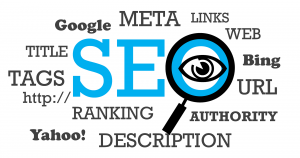 Every website is going to have some downtime. Hopefully this downtime is anticipated and planned for, such as when you or your web host performs scheduled maintenance and updates. In such instances, you have the opportunity to warn users in advance and even put up temporary placeholders to let visitors know when you’ll be back up and running.
Every website is going to have some downtime. Hopefully this downtime is anticipated and planned for, such as when you or your web host performs scheduled maintenance and updates. In such instances, you have the opportunity to warn users in advance and even put up temporary placeholders to let visitors know when you’ll be back up and running.
Unfortunately, some amount of unscheduled downtime is also inevitable. You can take steps to avoid common issues like hardware and software failure, as well as human error, and the average business is unlikely to be the target of DoS (denial of service) attacks, but some things are out of your hands. When power outages, natural disasters, and other catastrophes occur, there’s not a lot you can do.
Of course, other issues may be at play. For example, your web hosting could be spotty, resulting in frequent, unscheduled downtime. Or you may not have adequate bandwidth to support the number of visitors to your site.
The good news is that with proper monitoring you can become aware of downtime and the issues causing it so that changes can be made. This is important not only so that visitors and patrons can access your site, but because downtime can have a marked impact on the efficacy of your SEO efforts.
If you’re going to bother spending time and money optimizing, you want to make sure there’s a return on investment. Here are a few ways in which network downtime could affect your SEO efforts.
Loss of Patronage
What is the point of search engine optimization? You want to take steps to ensure that consumers interested in your products or services are able to find you, that they’re able to find you before your competitors, and that they are not only directed your way, but compelled to visit your site, make purchases, and become loyal patrons.
In other words, SEO efforts are intended to increase visibility and encourage patronage. So you’re busily finding ways to funnel customers to your website. Now what if your website isn’t there?
As an online user yourself, you are no doubt familiar with the frustration of trying to visit a website and instead receiving error messages or extended loading screens. What is your response? You may try back again later, especially if you’re a loyal customer; but if this is your first visit, chances are you’ll navigate back to your search query and try the next result.
This is especially critical for businesses that invest heavily in enterprise marketing efforts like search engine optimization. Large-scale campaigns drive significant traffic, but if your website experiences downtime at the wrong moment, you could lose thousands of potential leads. An unreliable website doesn’t just hurt sales—it undermines brand credibility and weakens the trust you’ve built with your audience.
The point is that site downtime can be extremely damaging when it comes to impressing prospective customers and keeping loyal patrons happy. Your SEO efforts will be for naught if your site is often unavailable to users.
Inaccessibility
Customers aren’t the only ones looking at your website, which is why SEO is so important. If you want to be found by search users, you must first be found by search engines, or more specifically, crawlers that seek information for indexing purposes.
SEO is really designed to make sure you are found by web crawlers. There are complicated algorithms designed to determine how websites are ranked for search purposes. The more information web crawlers can gather on you, the better chance you have to boost your rankings, in a very simplistic sense.
So what happens when your website is inaccessible due to site downtime? If web crawlers look for your site and find it down once in a while, it probably won’t damage your SEO efforts. Search engines realize that site downtime happens and that it’s not always within your control.
What can be damaging is frequent or prolonged downtime. Web crawlers are programmed to recrawl, or check back with pages that are inaccessible. Where you get into trouble is if recrawls result in further inaccessibility.
When this occurs, especially over a prolonged period of time, your page rank will suffer as a result. It’s no surprise – search engines want to make sure they’re promoting the best results in order to keep their own users happy.
Site Speed
Another potential problem area is site speed, which Google admitted plays a role in their algorithms and rankings. With a subpar web host you could not only suffer downtime, but issues with loading speed as well.
It’s important to be aware of both of these factors and take steps to correct them. If you want to see the best results from your SEO efforts, it’s imperative that both web crawlers and consumers are able to access your site in a reliable and expedient manner.

